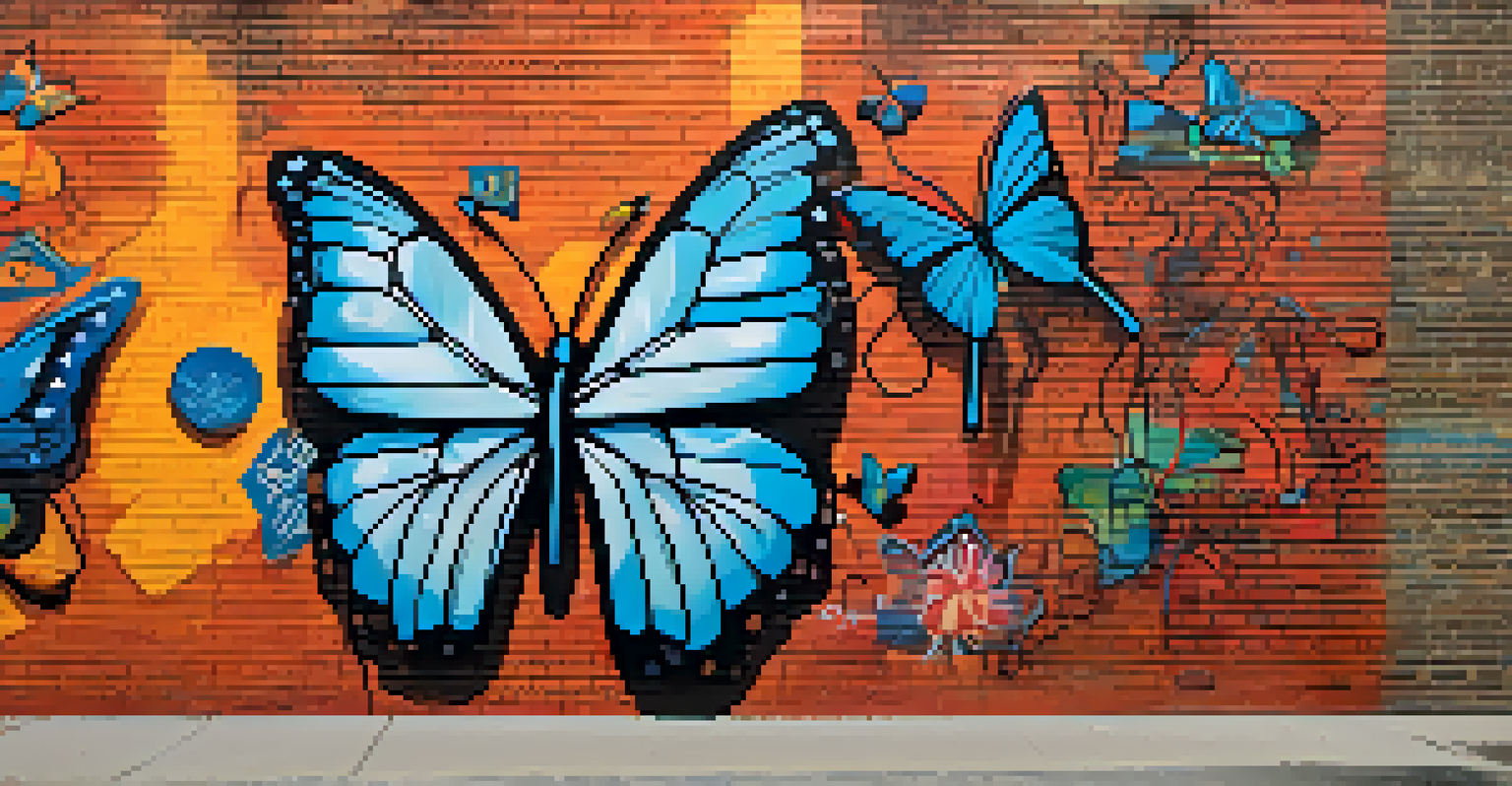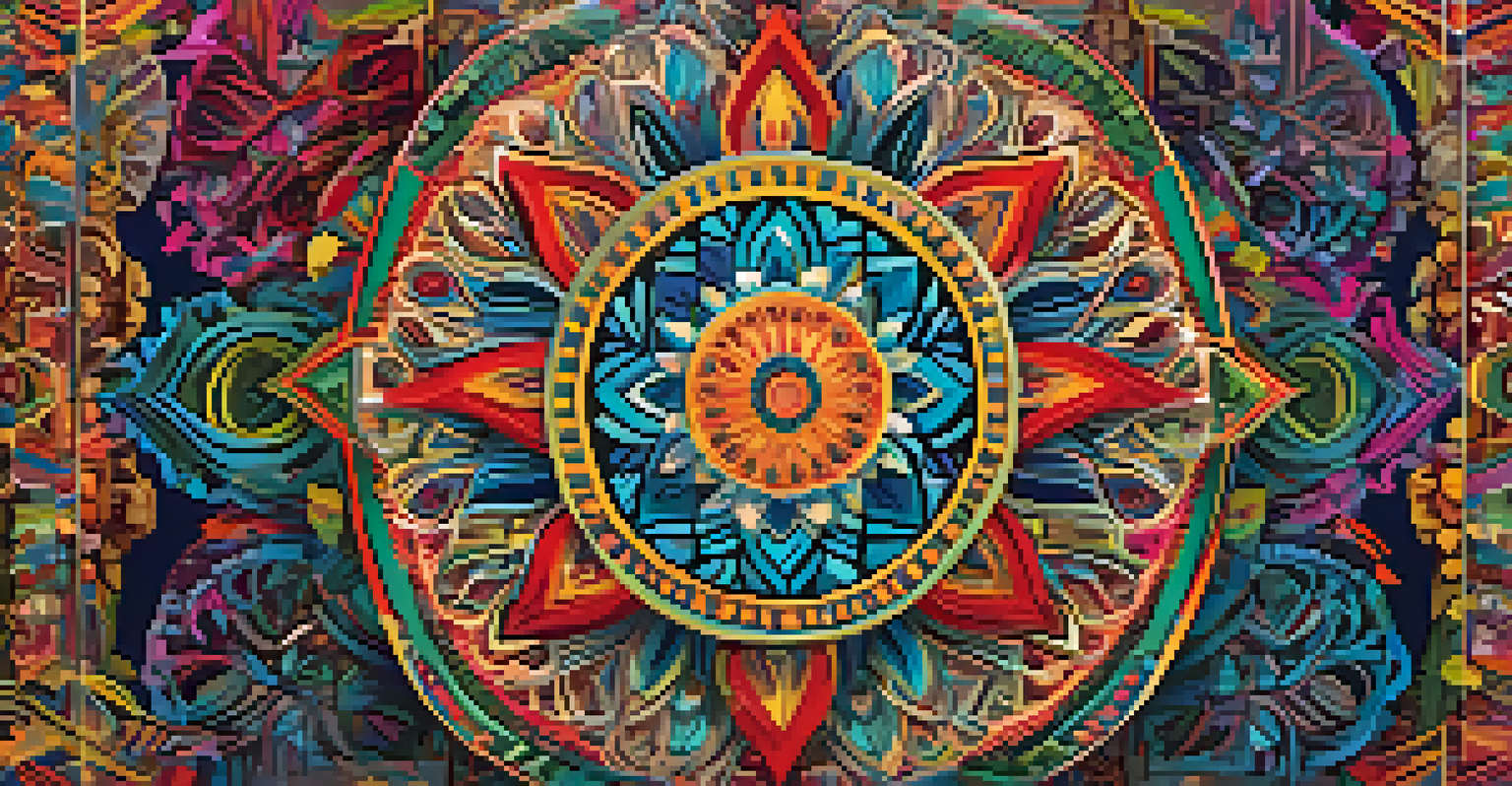Art Movements and Their Relationship with Cultural Appropriation

Understanding Art Movements: A Brief Overview
Art movements have shaped the course of history, reflecting the social, political, and cultural dynamics of their times. From Impressionism to Surrealism, each movement embodies a unique set of values and aesthetics that resonate with specific contexts. Recognizing these movements helps us appreciate the rich tapestry of artistic expression and its evolution over time.
Art is a reflection of society, and it is vital for artists to engage with cultural elements thoughtfully, ensuring they honor the source while contributing to the broader artistic dialogue.
However, art is often a mirror of society, and as such, it can sometimes reflect deep-seated issues, including cultural appropriation. This term refers to the practice of taking or borrowing elements from one culture by another, often without understanding or respect for their significance. In the context of art movements, this can lead to problematic representations and misinterpretations.
Art movements can either challenge or reinforce these dynamics, depending on how artists navigate cultural influences. By examining the interplay between art and cultural appropriation, we can gain deeper insights into the responsibilities artists have toward the cultures they draw inspiration from.
The Role of Impressionism in Cultural Exchange
Impressionism, emerging in the late 19th century, revolutionized the art world by focusing on light, color, and everyday scenes. Artists like Claude Monet and Edgar Degas captured fleeting moments, bringing a fresh perspective to the canvas. However, this movement also had connections to various cultural influences, including Japanese prints that inspired many Impressionist techniques.

The fascination with Japanese art is a prime example of cultural exchange, where artists borrowed styles and aesthetics while often failing to acknowledge their origins. While this borrowing enriched Impressionism, it also raises questions about ownership and respect for the original culture. It's essential to consider how these influences were integrated and the impact on the cultures involved.
Art Reflects Cultural Dynamics
Art movements not only showcase aesthetic values but also mirror societal issues, including cultural appropriation.
Through Impressionism, we see how cultural appropriation can occur alongside genuine admiration and inspiration. This duality highlights the need for artists to approach cultural elements thoughtfully, ensuring they honor the source while contributing to the broader artistic dialogue.
Modernism: A Shift in Artistic Perspectives
Modernism, which gained momentum in the early 20th century, marked a departure from traditional forms and embraced experimentation. Artists like Pablo Picasso and Marcel Duchamp challenged conventions, often drawing from diverse cultural influences, including African art. This integration of different styles reshaped the landscape of art but also stirred debates on cultural appropriation.
In the world of art, the line between inspiration and appropriation can become blurred; context and intent are essential in creative expression.
While modern artists sought to break boundaries, the line between inspiration and appropriation can become blurred. For instance, Picasso's use of African motifs was groundbreaking yet raised questions about the commodification of culture. This tension highlights a critical aspect: the importance of context and intent in creative expression.
As we reflect on Modernism, it serves as a reminder of the responsibility artists bear when engaging with other cultures. Acknowledging the origins of borrowed elements fosters a deeper understanding and respect, ultimately enriching the artistic narrative rather than diluting it.
Postmodernism and the Question of Authenticity
Postmodernism emerged as a response to the ideals of Modernism, often embracing irony and pastiche. Artists like Andy Warhol and Cindy Sherman played with cultural symbols, sometimes appropriating elements from various cultures to comment on consumerism and identity. This approach raises important questions about authenticity and the meaning of cultural symbols.
In postmodern art, the act of appropriation can be both a critique and a celebration, blurring the lines between creator and culture. However, this playful engagement can sometimes lead to misunderstandings or oversimplifications of the original culture's significance. It's crucial to navigate this landscape carefully, ensuring that the appropriated elements are treated with thoughtfulness.
Impressionism and Cultural Exchange
While Impressionism was inspired by diverse cultural influences, it raises questions about ownership and respect for original cultures.
Thus, postmodernism encourages a conversation about the complexities of cultural representation in art. By critically examining these appropriations, artists can foster a more inclusive dialogue that respects the nuances of cultural heritage.
Street Art: A Contemporary Canvas for Cultural Dialogue
Street art has become a powerful medium for social commentary, often reflecting the voices of marginalized communities. Artists like Banksy and Shepard Fairey utilize public spaces to challenge societal norms and address issues like inequality and injustice. This form of art frequently interacts with various cultural symbols, sometimes appropriating them in the process.
While street art can amplify cultural narratives, it can also risk appropriating these symbols without proper context. For instance, using indigenous imagery or motifs without understanding their significance can lead to misrepresentation. This highlights the need for artists to engage in meaningful dialogue with the cultures they reference.
Ultimately, street art serves as a reminder of the importance of cultural sensitivity and respect in artistic expression. By fostering connections rather than divisions, artists can create impactful works that celebrate diversity while avoiding the pitfalls of cultural appropriation.
The Digital Age: New Challenges in Cultural Appropriation
In our digital world, art is more accessible than ever, leading to a global exchange of ideas and styles. Platforms like Instagram and TikTok allow artists to share their work with wide audiences, often drawing inspiration from diverse cultures. However, this accessibility also raises concerns about the appropriation of cultural elements without proper credit.
As artists navigate this landscape, they must grapple with the implications of sharing and borrowing in a digital context. The rapid spread of images can dilute the cultural significance of artworks, leading to oversimplification and commodification. This situation necessitates a thoughtful approach to cultural representation in the digital sphere.
Ethics in Artistic Appropriation
Navigating cultural appropriation in art requires ethical consideration, encouraging collaboration and respect for the cultures involved.
Therefore, the digital age presents both opportunities and challenges for artists regarding cultural appropriation. By promoting awareness and encouraging respectful representation, we can foster a more inclusive artistic community that values diverse cultural narratives.
Navigating the Ethics of Cultural Appropriation in Art
As we draw insights from various art movements, it becomes clear that navigating cultural appropriation requires ethical consideration. Artists must reflect on their intentions and the impacts of their work on the cultures they engage with. This reflection fosters a sense of accountability and encourages creators to approach cultural elements with respect.
One way to navigate these complexities is through collaboration. By working alongside cultural representatives, artists can gain insights and ensure that their work honors the original culture's significance. This collaborative approach not only enriches the artistic process but also promotes a more equitable exchange of ideas.

Ultimately, the ethics of cultural appropriation in art call for a deeper understanding of the interconnectedness of cultures. Embracing this interconnectedness can lead to a more vibrant and respectful artistic landscape, where appreciation supersedes appropriation.